Tell someone you are going on holiday to Somalia and you should rightly expect to be called insane a few times. Especially when you mention the fact that you intend to check out some of the desolate beaches that line the Gulf of Aden, the most pirated stretch of water on earth. Now obviously I am not insane (At least I hope that that’s obvious…) and nor do I have some deep desire to be kidnapped by Al Shabab militants. So what’s the secret?
Much like Iraqi Kurdistan, which I visited last year, there exists an independent region within Somalia which is an oasis of stability in a desert of near lawlessness. This region is called Somaliland (an ode to it’s former colonial past when it was called British Somaliland) and is currently doing it’s utmost to achieve independence as it’s own country.
As it stands visiting Somaliland is almost exactly like visiting an entirely separate country to Somalia. Instead of getting a Somalian visa you get a Somaliland one, the currency is the Somaliland Shilling and you are stamped into this region of Somalia by a member of the Somaliland border force. There is only the occasional thing that shatters the illusion, such as our flight out of Somaliland officially originating in Somalia which caused some problems when it came to paying for it in London.
To enter Somaliland from it’s land border you must catch a bus from the Ethiopian town Jijiga. There are a multitude of ways to reach Jijiga from Addis Ababa (flight, direct bus, local bus or a combination of the above) that I won’t go into detail about here. Jijiga bus station is a pretty hectic place about 2km east of the town centre.
We disembarked the bus we arrived on from Harar and started asking about for a bus to Hargeisa, a woman approached me and said that if we are going to Somaliland then we should be very careful, strangely the first local person not to tell us that the place was very safe. A local pointed out that we must get a bus to the border down of Togo Wajale and cross by ourselves. We promptly found a bus and got on board and waited for it to fill up, during which time a man approached to check where the bus was going causing us much confusion when his accent made him asking “Togo Wajale?” sound like he was trying to sell “Tobacco or Charlie?”.
The bus rolled out of the station and started to head North east on the road to border and immediately we began to hit regular police checkpoints. This was both reassuring and unnerving as the fact that Ethiopia are securing this road so much is a reminder of the destination. The concern isn’t to do with Somaliland but the fact that if Ethiopia were to get slack on the border with Somaliland then they would be relying on the Somaliland border force securing their border with the rest of Somalia, a very tough task for a state that does not have a huge amount of money.
After 90 minutes or so, and at least 6 police checkpoints, we reached the small bus drop off point in Togo Wajale and walked the 100 metres to the bridge over the border. We had anticipated this being a fairly basic border but a simple rope across the road was a bit of a surprise. We got stamped out of Ethiopia (interrupting the border guards nap in the sun outside), stepped over the rope and walked into Somaliland.
Once over the small bridge we were ushered into the Somaliland Immigration building (the small yellow building with the Red, White and Green flag in the photo above) and were excitedly greeted by a young, very well dressed border guard offering a handshake with the statement “Welcome to my country!”. After the formalities (He was interested in our visas as he had never seen ones issued by the Somaliland London Mission before) he showed us out to the shared taxi stand and negotiated for us the proper rate with a driver.
Out initial happiness to be in a comfy car after the two bus journeys of the day (One where I had sat on the floor for two hours and another where we were very crammed in) was shattered fast after we were told to both squeeze in the front. After the two of us stood staring at him confused he showed that one of us would need to straddle the centre console and gearstick, my friend drawing the short straw on that one.
After a very uncomfortable two hour drive for myself, and bordering on agony for my friend, we arrived at the Oriental Hotel in Hargeisa. I think the four Hijab clad women crammed in the back may have been a bit more comfortable but the loudest phone conversation in history, which was carried by one of them, made the journey just that little bit more unbearable.
We were up the next morning to go for a walk about the town and almost as soon we stepped foot out of the door we were greeted by people who wanted to shake our hands and say hello. A common theme was that once they discovered we were British they insisted that we were as good as brothers due to Somaliland’s British Protectorate past. Unlike many countries, where this politeness and eagerness to greet foreigners is usually a thinly veiled attempt to sell something, Somalilanders are much more genuine. Once a quick handshake and exchange of names was done they bid us on our way with a wave.
We made our way to the cities famous Civil War Monument. This monument is also informally referred to as the MiG monument to due it’s prominent feature of a crashed Somali Air Force MiG Fighter Bomber. In 1988, as a result of the two dictators Siyad Barre (Somalia) and Mengustu (Ethiopia) signing a peace agreement, the SNM rebel group (Somali National Movement) overran Barre’s army in Hargeisa and Burao. In response Barre ordered the bombing and subsequent shelling of the cities killing 50,000 civilians in the process. The SNM eventually succeeded in their goal of securing the interests of the Isaaq clan through the forming of Somaliland. The base of the monument features several graphic depictions of the result of Barre’s attacks.
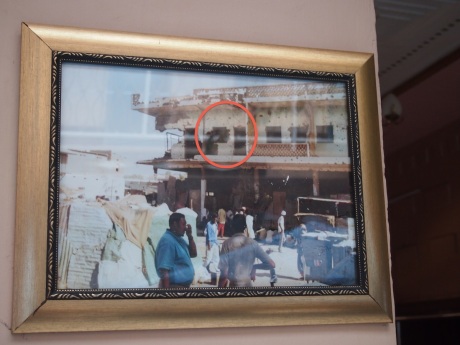
The Oriental hotel during the bombing of Hargeisa. Our room is the one circled in read, thankfully refurbished.
An interesting feature of the city is that many shops are decorated with colourful murals of the shops contents. Whilst very pleasant visually it’s also usually a sign of high rates of illiteracy.
We went to checkout the towns main markets which was a very intense and interesting experience but it also led to one of our only negative experiences in country, which ultimately had more to do with my ignorance of just how strict muslim the region is.
Now most western people are aware of many of the main restrictions of Islam (Halal diet, no intoxicants, no pork, conservative dress etc.) but I’d forgotten that tattoos are also Harem (forbidden).
Whilst the tattoos on my arm were mostly covered by a long sleeve shirt a few people spotted them and were very curious. They were impressed by the colour and detail as I later figured they assumed they were very high quality henna. A crowd of 10 or so people formed to have a look and got very happy when I pointed out Somaliland on a tattoo of a globe on my forearm. When one of them asked how long it lasts, and I naively answered “Life-long”, the atmosphere changed in a heart beat. Half the group walked away quickly, two guys quickly rolled down my sleeve saying harem and a couple of them looked visibly angry. We very quickly disappeared of into the rest of the market, with my cuffs firmly buttoned up.
The next day we left Hargeisa for two days to see some of the rest of the country but it makes sense to detail the sights we saw upon our return to the city here.
Located in the south eastern suburbs of the city is the Hargeisa Livestock market where Camels, Goats and Cows are traded. It provides a great opportunity for photographs of both the livestock and people who are there to buy and sell.
One of the most interesting is the black headed sheep you see wandering about. The Somali Sheep (also given the slightly more appropriate name “Berbera Blackhead” after the countries port city Berbera) is so iconic in the region that it featured on the countries stamps during the colonial era;
Another interesting feature are the local cattle, a cross breed of South East Asian Zebu’s and local Taurine Cattle. The loose skin around the neck and the hump on its back make them look rather differant to cattle in the west.
A curiosity of the city is also the many money changes you see around the streets who have huge piles of cash. Somaliland’s largest denomination (the 1,000 shilling note) is worth around £0.10 which has made huge wads of cash a common sight in the country. Many people use USD for large purchases or a modern mobile phone payment-by-text system called Zaad. Interestingly, when making small purchases, we were sometimes given multi currency prices i.e. 4 litres of bottled water was 1 US dollar and 500 Somaliland shillings ($1.07). After buying some notes off of the guy below I just had to ask for a photo of his desk made of cash.
I plan to write a couple of more posts on Somaliland about the incredible cave paintings at Las Geel, our visits to Berbera and Sheikh (including a hairy few seconds where we thought we were going to be kidnapped) as well as the fun we had tracking the Baboons on the Nasa Hablood (“Virgin’s Breasts”) mountains. Please subscribe if you’d like to receive updates on this as the start of next weeks bike ride from Istanbul to Shanghai.

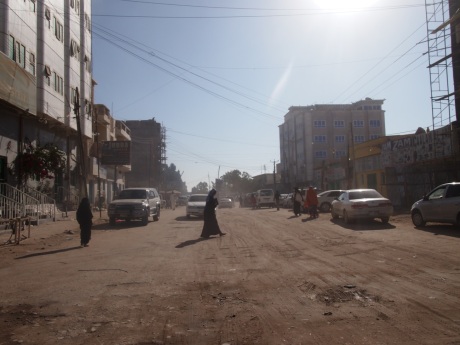
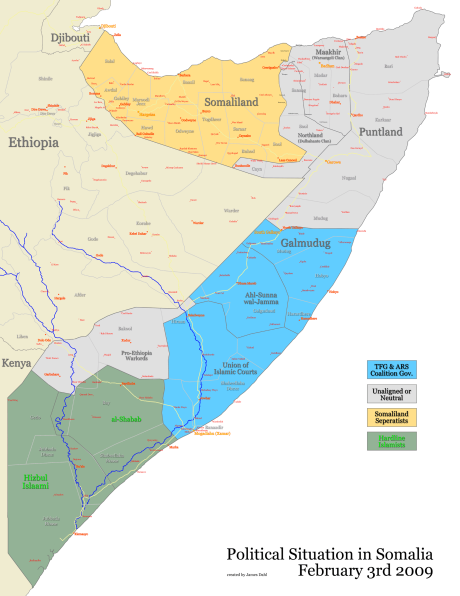
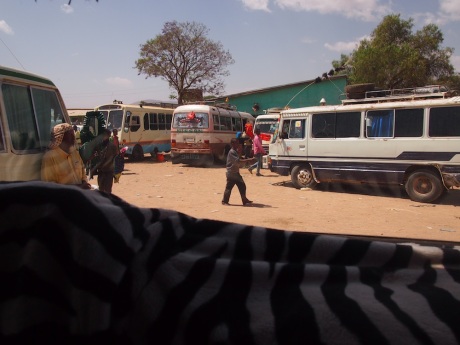

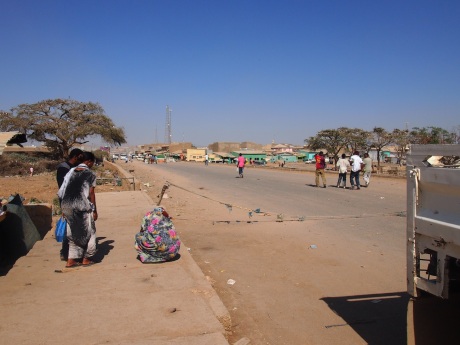
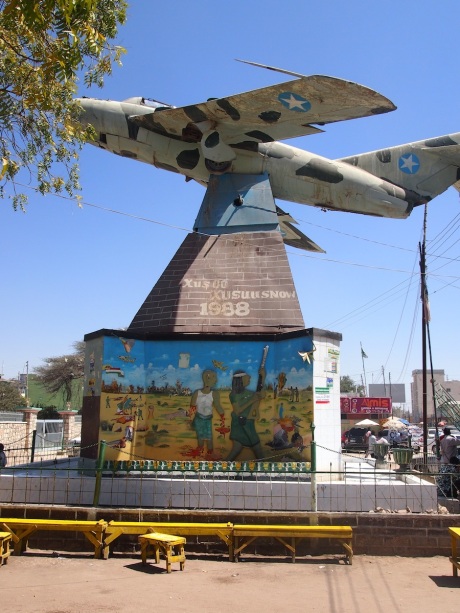

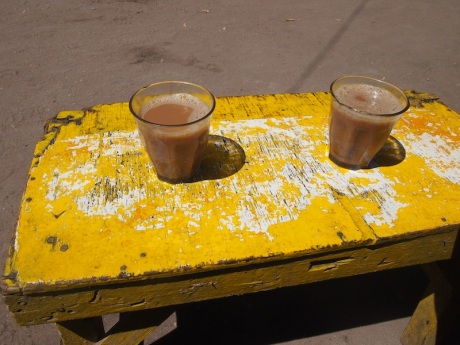

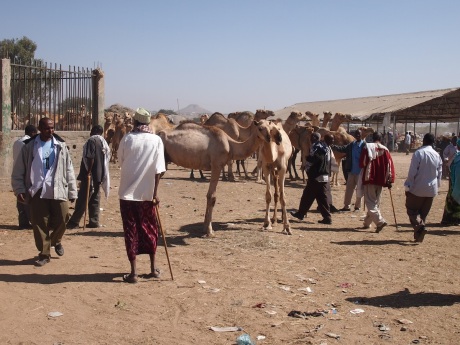

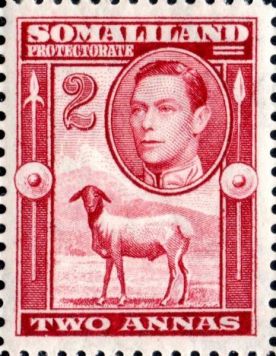
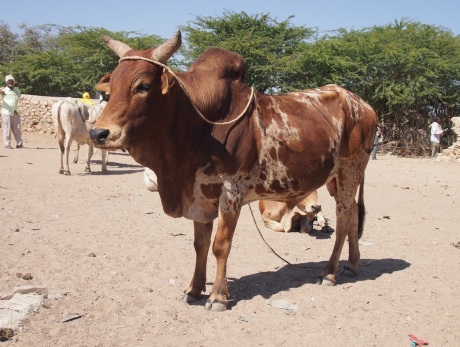

Very interesting reading …..
Great read. I’m curious about the Las Geel part.